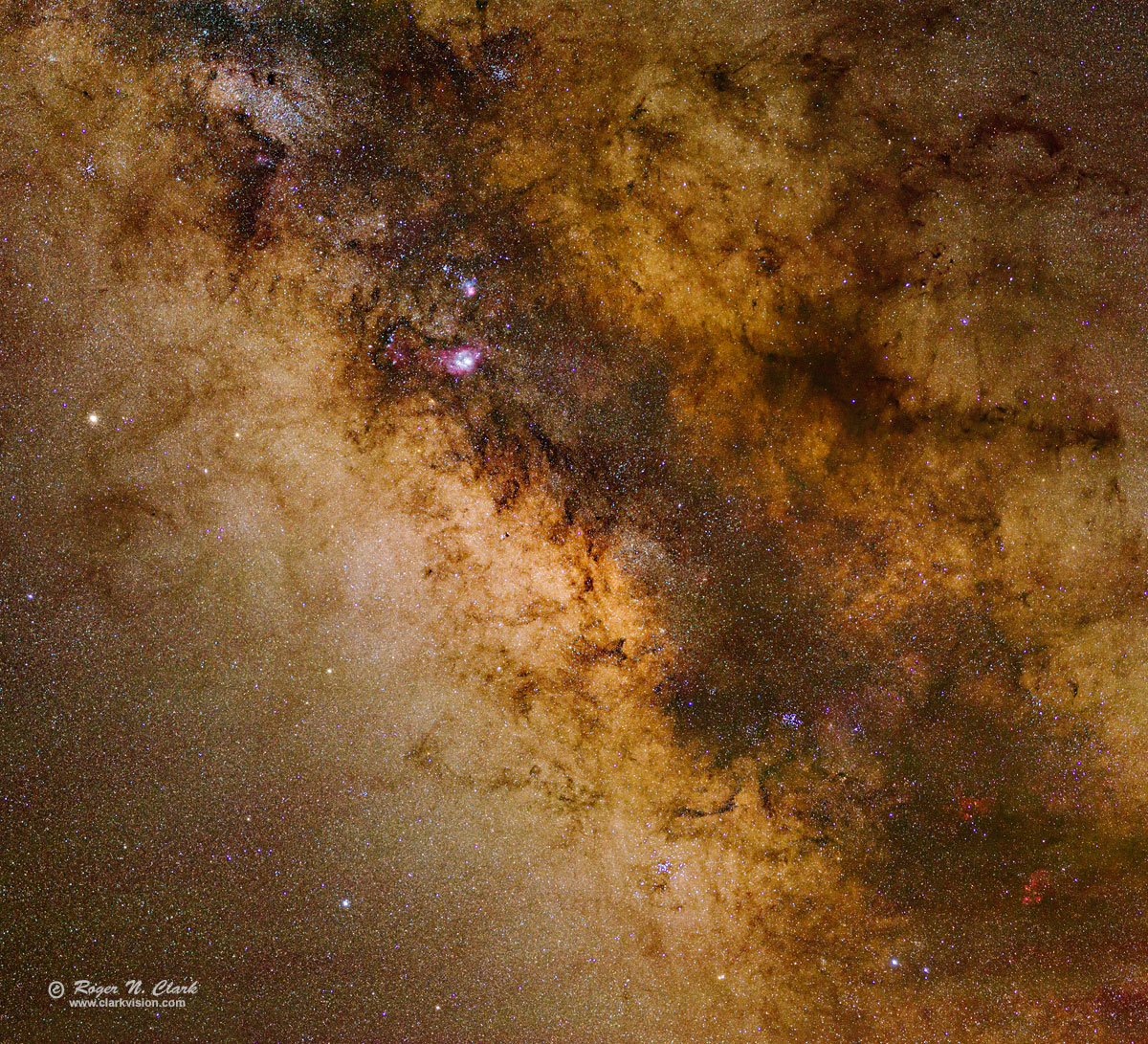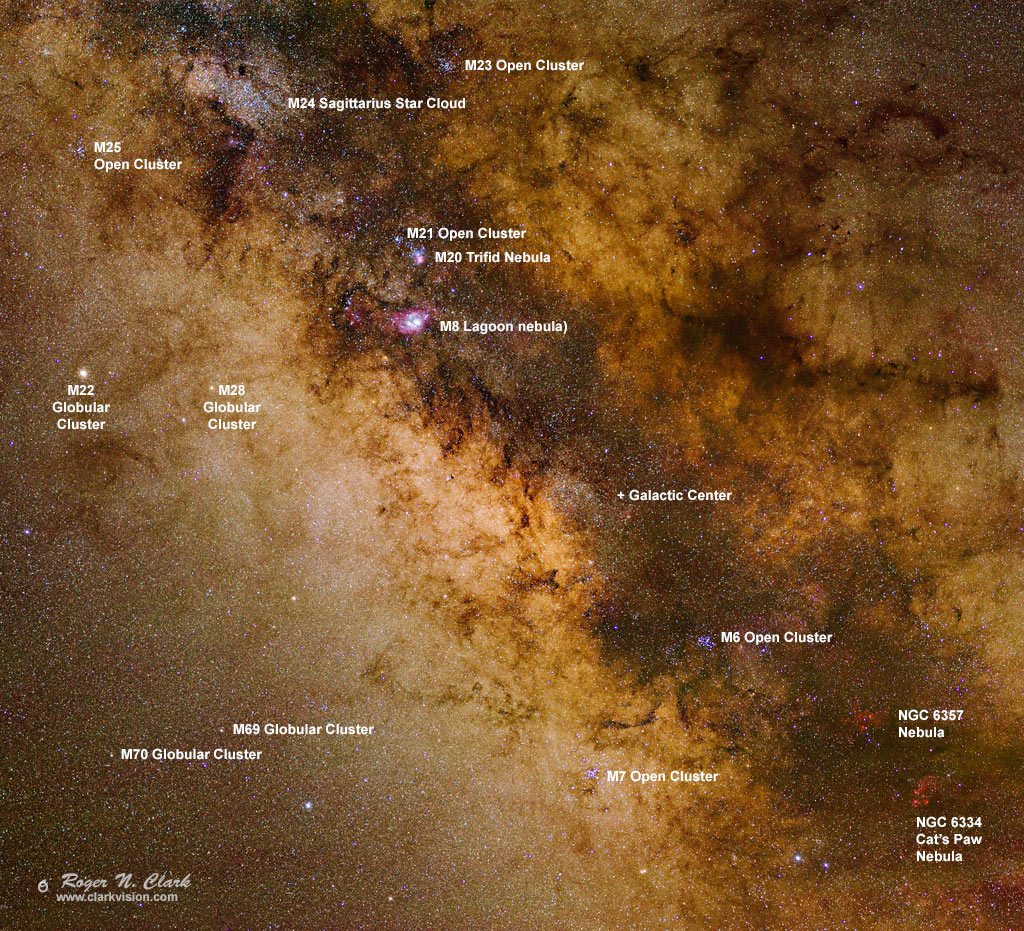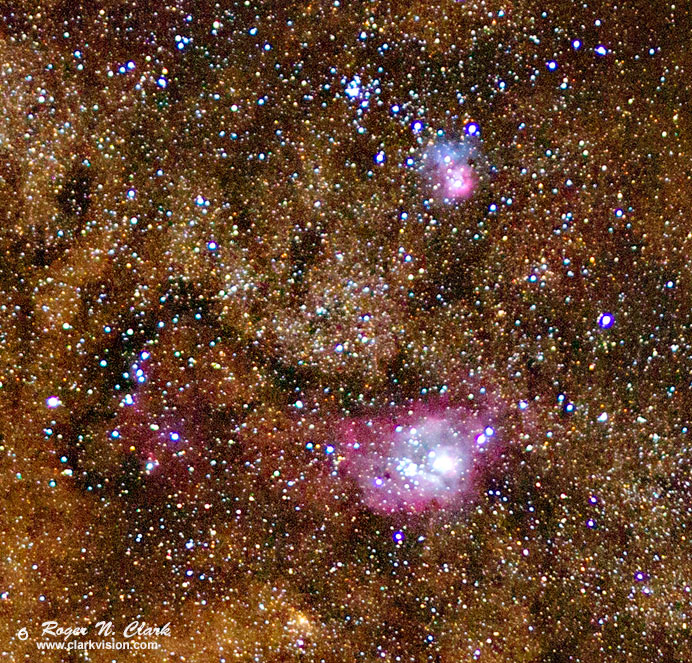| Home | Galleries | Articles | Reviews | Best Gear | New | About | Contact | Gallery Index | Previous |
Next |

| Home | Galleries | Articles | Reviews | Best Gear | New | About | Contact | Gallery Index | Previous |
Next |

The Milky Way and the center of our galaxy shines brightly in the night sky in northern hemisphere summer. This view includes some of the constellations Sagittarius, Ophiuchus, and Scorpius. The area includes many showpieces visible in small telescopes. Some of them are labeled in Figure 1, below. The galactic center is about 25,000 to 28,000 light years away from us. The image is natural color and on dark nights away from city lights, this region of the Milky Way appears brownish for those really dark adapted with no lights, including no red flashlights and camera LCD screens for at least a half hour. In larger amateur telescopes, some of the nebulae show color, like the pink from hydrogen emission in the Lagoon nebula, and the pink and blue in the Trifid nebula. This is a wonderful region to explore with binoculars as well as unaided eye.
The reddish brown color in the galaxy is due to absorption of blue light by dust. Many "dark nebula" are areas of very thick dust that obscures viewing more distant stars. For more on natural color in the night sky see Parts 2a, 2b, 2c and 2d on Color of the Night Sky and proper post processing to show those colors. There is some residual green airglow in the image which did not get removed.
Technical. Canon 1d Mark IV 16 megapixel digital camera, 100 mm f/2 lens at f/2, ISO 1600. This is a crop from a 21 frame mosaic: 1 minute exposures on the sky with tracking using and Astrotrac. The final mosaic is 6829 pixels wide by 6207 pixels high (42.4 megapixels).
The Exposure Factors, CEF, CEFA are measures of the relative amounts of light received from a subject. It can be used to fairly compare wildly different lens/telescope apertures and exposure times. For this image:


Larger image, 1/3 of full resolution: 2277 x 2070 pixels (2.4 megabytes).
Modern DSLRs like the 1D Mark IV include on sensor dark current suppression and low fixed pattern noise at ISOs around 1600 and higher, making no need for dark frame subtraction. Modern raw converters correct for light fall-off and also correct for hot/dead/stuck pixels. This makes processing low light images easy: simply align and average. See my series on Astrophotography Image Processing for more details.
The color balance is close to true color, meaning this is a stock camera with very close spectral response similar to the human eye. Astrophotographers often modify cameras for increased sensitivity to Hydrogen-alpha emission (red). Hydrogen emission nebulae actually appear pink due to H-alpha (red), H-beta (blue) and emission from other atoms, like oxygen and sulfur. Modified cameras over emphasize H-alpha, making hydrogen emission nebulae come out red in photos. Unmodified cameras do a better job at color separation of the various processes that occur in the deep sky.
To learn how to obtain stunning images like this, please visit my Extensive Articles on Photography .
Keywords to this image = astrophoto-1 galaxy Messier nebula star_cluster night low-light digital_astro mosaic canon_1d4
Image ID: galactic-center-100mm-f2-c06.08.2013.C45I3080-3103.l-1200-sw.jpg
| Home | Galleries | Articles | Reviews | Best Gear | Science | New | About | Contact |
Last updated November 03, 2025